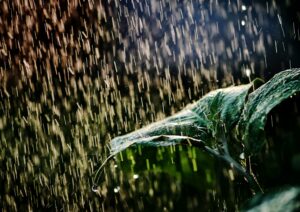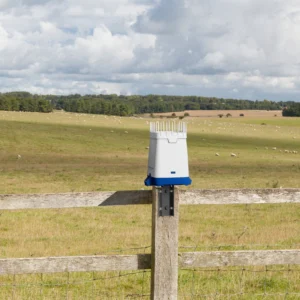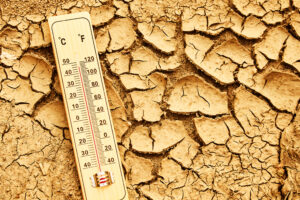Artikels

How Rainwater Harvesting Supports Water Resilience in NZ
New Zealand faces increasing water challenges due to changing climate patterns, drought, and growing demand. This article explores how rainwater harvesting empowers Kiwi households and communities to enhance water resilience, reduce reliance on municipal supply, and secure sustainable access to water year-round.

South Africa’s Water Crisis: How Rain Harvesting Can Help
As water shortages worsen in South Africa, rainwater harvesting is emerging as a practical and sustainable solution. This article explores the crisis, its causes, and how rain harvesting can help safeguard water access for households, farms, and cities alike.

Australia’s Drought Crisis: How Rainwater Collection Can Help
With large parts of Australia facing severe drought, the need for practical water-saving solutions is more urgent than ever. This article explores how rainwater collection systems can help combat water scarcity, reduce reliance on mains supply, and support long-term water resilience.

Smart Rainwater Management: The Future of Rain Harvesting with Smart Tank Monitoring
Discover how smart tank monitoring systems help you manage your rainwater supply efficiently, improve water usage, and plan for dry weather.

Smart Water Management for Your Rain Harvesting System
Upgrade your rain harvesting system with smart water management. Gain real-time control, reduce water waste, and ensure consistent water availability.

The Benefits of Digital Water Tracking for Your Rainwater Harvesting System
Track your rainwater use in real time. Discover how digital water tracking boosts efficiency, saves water, and helps you make smarter decisions.

Technology’s Role in Preventing Water Shortages in Europe
With rising droughts and climate pressures, Europe is turning to smart technology to manage water use, monitor supply, and reduce the risk of shortages.

Smart Water Monitoring Technology: The Importance of Tank Level Awareness
Knowing how much water is in your tank is no longer a guessing game. Smart water monitoring technology gives you real-time insights for smarter water management.

Upgrading Rainwater Harvesting Systems with Smart Monitoring Technology
Smart monitoring technology is transforming rainwater harvesting. Learn how to boost your system’s efficiency, track water levels, and make informed water decisions.

Simplifying Water Tracking in Agriculture with Rain Harvesting Connect
Rain Harvesting Connect simplifies water tracking in agriculture by giving farmers real-time data on rainfall and usage. Make informed irrigation decisions, save water, and boost productivity.

How to Future-Proof Your Water Supply
Worried about water shortages? Discover how to future-proof your water supply using smart tools and practical rain harvesting strategies for long-term security.

How Smart Tank Gauges Enhance Rainwater Harvesting
Smart tank gauges are transforming rainwater harvesting by giving users real-time data, smarter water usage, and better control over their water storage systems.

Track & Save Water Effortlessly
Smart tank gauges simplify rainwater harvesting by showing you exactly how much water you have—anytime, anywhere. Effortless water tracking starts here.

Stay Ahead of Water Scarcity with Intelligent Solutions
With smart tank gauges, you can track, manage, and optimise your rainwater use like never before. Stay one step ahead of water scarcity with data-driven solutions.

How Smart Sensors Help Reduce Water Waste in the European Union
Smart sensors are transforming how water is managed across the EU—enabling real-time monitoring, leak prevention, and smarter usage to combat water waste.

How Farmers Can Benefit from Smart Water Monitoring
Smart water monitoring empowers farmers to make data-driven decisions, reduce water usage, and improve crop performance through precise irrigation control.

Monitor Rainfall with Precision Using Rain Harvesting Connect Smart Devices
Discover how Rain Harvesting Connect Smart Devices help you monitor rainfall and water usage with pinpoint accuracy. From tracking tank levels to receiving real-time data, these smart tools empower you to manage your rainwater system more effectively than ever.

The Impact of Water Monitoring on India’s Agricultural Yields
India’s farmers are turning to water monitoring tools to improve irrigation, conserve resources, and increase agricultural productivity across diverse climates.

Why Water Data is Critical in Managing Shortages in India
India is on the brink of a severe water crisis. Discover how data-driven water management, powered by smart technology, can help communities and businesses safeguard their water future.

How IoT is Changing Water Resource Management
With growing pressure on water resources, South Africa is turning to smart technology for answers. Learn how IoT-enabled solutions are reshaping water management and helping prevent future water crises.

Why Accurate Water Monitoring Matters
Water challenges in the U.S. are escalating, from pollution to scarcity. Discover how accurate water monitoring – powered by smart sensors and real-time data – is reshaping how communities, municipalities, and industries manage this essential resource.

How to Use Rainwater for Garden Irrigation in the UK
Looking to water your garden more sustainably? Learn how to set up a rainwater irrigation system in your UK garden, reduce your water bills, and help your plants thrive.

Why Water Conservation is Becoming a Major Issue in Europe
Water conservation is becoming a critical issue across Europe as climate change, urban growth, and agricultural demand strain existing water resources. This article explores the growing pressures on Europe’s water systems, highlights the regions most affected, and presents innovative solutions that individuals and governments can adopt to secure water for the future.

Addressing Water Shortages with Smart Rainwater Solutions – Australia
Australia is no stranger to water shortages, with droughts and dry spells affecting both cities and rural areas. This article explores how smart rainwater solutions—such as connected tank gauges, first flush devices, and water monitoring systems—are helping households and communities manage water more efficiently. Discover practical ways to future-proof your water supply in a changing climate.

How to Prepare Your Rainwater Harvesting System for a Storm
Storm preparation for your rainwater harvesting system helps you avoid overflow, debris build-up, and water contamination. In this guide, we walk through key steps—from clearing filters to checking storage tanks—to make sure your system is ready when the storm arrives. Protect your investment and ensure better-quality water with these simple precautions.

Global Water Issues and How Smart Monitoring Can Help
Global water issues—from scarcity to contamination—impact millions every day. In this article, we explore how smart monitoring technologies can provide real-time data to improve water access, usage efficiency, and system maintenance. By combining data insights with local action, smart tools empower communities and homes to manage water more sustainably and effectively.

The Silent Water War: How Unpredictable UK Weather and Regulatory Failures Could Spark Disaster!
The silent war over water is brewing in the UK. As unpredictable weather patterns wreak havoc on traditional water collection methods, outdated and fragmented regulations are leaving homeowners and businesses vulnerable. 'The Silent Water War: How Unpredictable UK Weather and Regulatory Failures Could Spark Disaster!' exposes the hidden risks of relying on current rainwater harvesting systems. Through in-depth analysis and expert insights, this article reveals how these combined challenges could lead to costly failures—and what must be done now to avert a looming crisis. Dive into a story that uncovers the operational and financial dangers lurking behind every drop, and learn how modern innovations and regulatory reform could be the only things standing between disaster and a more secure water future.

From Drought to Abundance: How Rain Harvesting is Changing Lives in Rural Communities
In rural Australia, where water scarcity is a constant challenge, Rain Harvesting™ is revolutionising how communities secure and manage water. With advanced rainwater harvesting systems, farmers are turning drought into opportunity—boosting resilience, productivity, and sustainability. Learn how Rain Harvesting™ Design Service can help you maximise every drop.

From Roman Ruins to Modern Crisis: The Surprising History and Future of Rainwater Harvesting in the UK
Explore the history of rainwater harvesting in the UK, from Roman engineering to modern solutions for water security and conservation, shaping the future of water management.

The State-by-State Divide: How Rainwater Harvesting Laws Vary Across the U.S.
Rainwater harvesting laws vary widely across the U.S. Explore state-by-state regulations, restrictions, and incentives shaping water collection practices.

The Urban Potential of rainwater harvesting: Can European Cities Reduce Flooding and Water Bills?
Can European cities tackle flooding and lower water bills with urban rainwater harvesting? Explore how innovative solutions make water management more efficient.

Why Germany Leads Europe in Rain Water Harvesting—And What Others Can Learn
Germany is Europe's leader in rainwater harvesting, with over 1.8 million households using collection systems. Discover the policies, incentives, and infrastructure that drive adoption and what other nations can learn

The Silent Crisis: Is Your Rain Harvesting System Ready for Summer’s Wrath?
Prepare your rain harvesting system for summer’s intense heat with key tips to protect, optimise, and ensure a reliable water supply during extreme conditions.

Rainwater Harvesting for Drought-Prone States: Is It a Solution or a Drop in the Bucket?
As extreme droughts intensify across California, Arizona, and Texas, rainwater harvesting is gaining attention. This article explores its potential impact, challenges, and how it fits into broader water conservation efforts.

Cape Town’s Water Warriors: Stories of Survival and Innovation
When Cape Town faced the threat of Day Zero, residents turned to rainwater harvesting, greywater recycling, and tech-driven conservation. Discover the solutions that saved the city.

Powerless but Prepared – How Rain Harvesting Can Save You During Load Shedding
Load shedding in South Africa doesn’t just leave you in the dark—it can also cut off your water supply. With municipal pumps dependent on electricity, households and businesses face dry taps when the power goes out. This article explores how rainwater harvesting provides a reliable, independent water source during blackouts, offering solutions for homes, farms, and businesses. Discover how to secure your water supply, even when the grid fails.

Rainwater vs. Municipal Water: Is Rain the Better Choice for Kiwi Homes?
With rising water costs and concerns over municipal water quality, more Kiwis are turning to rainwater as a primary or supplementary source. This article explores whether rainwater is a viable alternative to municipal supply, assessing the impact on household expenses, environmental footprint, and long-term water security. Discover how rainwater harvesting can help you reduce costs, increase self-sufficiency, and take control of your water quality.

Rainwater Collection Systems for Urban India
With water scarcity intensifying in India’s cities, rainwater harvesting presents a vital solution for securing a sustainable water future. Despite challenges like unpredictable rainfall, high upfront costs, and regulatory gaps, tailored rainwater collection systems can help urban communities reduce dependence on municipal supply. This article explores how modernising traditional water conservation practices can transform water security across India’s growing cities.

Nurture Your Garden with Rainwater Harvesting: Benefits and Setup Guide
Discover the transformative benefits of rainwater harvesting for your garden. Mitigate water scarcity, boost plant health, and promote sustainability with natural nutrients.

Why Every Rainwater System Needs a Rain Head
Discover how a rain head can revolutionise your rainwater harvesting system, providing cleaner water, reduced maintenance, and cost savings. Learn why this small device is a game-changer for your setup.

How to Maintain Your Rain Harvesting System
Even the best rain harvesting systems need maintenance. This article covers how to inspect and clean key components like mesh areas, first flush systems, and final stage filters to ensure efficient operation and longevity.

5 maniere om jou watervlak na te gaan
Different tanks have different needs, explore five methods to monitor your water level.

Hoekom hou blare en puin uit jou stelsel
Maintaining the quality and efficiency of your rainwater collection system is crucial for its longevity and performance. One often overlooked aspect of this maintenance is keeping your system free from leaves and debris.

Verstaan en bestuur sediment in jou reën-oesstelsel
One of the most common issues faced by rainwater harvesters is dealing with sediment in their tanks. But what exactly is this sediment, and how can it be managed effectively.

Die beginnersgids vir reënvate
Rain barrels are a simple, cost-effective alternative to large-scale rainwater harvesting systems, ideal for conserving water and saving money.

Is jy voorbereid vir bosbrandseisoen?
As bushfire season approaches, it's time to take action and prepare your home. One resource often overlooked is your rainwater tank.

Rain Harvesting and Stormwater Management: Safeguarding Your Water Supply from Contamination
Protect your rainwater supply by preventing stormwater contamination. Explore the necessity, risks, benefits, and the use of an Air Gap.

Grey Water Systems: A Sustainable Solution for Water Conservation
Discover how grey water systems can recycle household wastewater, saving water, reducing costs, and promoting sustainable water management.

Rainwater Harvesting: A Beginner’s Guide
Discover the power of rain harvesting! Learn why it's essential and get started on your sustainable water journey.

Metal (Steel) Water Tanks: A History
Metal water tanks have long been a popular choice, but they've evolved considerably over the years.

Tank Gauge Plus – Which Radio Configuration (RC1, RC2 or RC4) is the right one for me?
Tank Gauge Plus offers three radio configurations: RC1 for Europe, Overseas France, and the Middle East and Africa; RC2 for Brazil, Canada, Mexico, Puerto Rico, and the USA; and RC4 for Latin America and Asia Pacific. Choose the right one for your location.

What is Water Security
It may be one of the greatest challenges facing the modern world, but there is hope.

What is a “Wet” Rain Harvesting system?
With their characteristic network of underground pipes, wet systems come with unique challenges and benefits.

“Wet” & “Dry” Rain Harvesting Systems: What’s the Difference?
When it comes to classifying your Rain Harvesting system type, it's all in the pipes.

Water Wise Habits
Sustainable water practices are good for your bank balance and good for the planet.

Calculating Your Roof Surface Area for Rain Harvesting
Knowing your roof size is vital if you want to calculate how much rainwater you can harvest.

Reasons for Using Rainwater: Some of the Benefits of Rain Harvesting
Necessity, environmental concerns, cost savings and personal preference can all influence rainwater use.

Rainwater Research in Australia & New Zealand
With the right system design and maintenance, rain harvesting can bring many benefits.

Rain Harvesting & Water Security in Urban Areas
Rain harvesting is one solution to the challenge of water security in urban areas.


National Guidelines for the Use of Rainwater Tanks
Learn what the enHealth Council has to say on using rainwater for drinking and other uses.

Mosquito Prevention in Rain Harvesting Systems
Mosquito-borne disease is no joke - but with the right precautions, you can keep these pests out of your Rain Harvesting system.

Plastic – Polyethylene Water Tanks
Strength, versatility and ease of installation are just some of the key selling points for plastic water tanks.

Keeping Mosquitos out of your Rain Harvesting System
Mosquito-proofing your Rain Harvesting system is vital - and thankfully pretty easy.

Ideal Uses for Rainwater Around Your Property
Flushing toilets and watering the garden aren't the only ways you can use rainwater around your property.

Damage from Stormwater Runoff – The Impact of Urban Development
The humble rain harvesting system offers an answer to this serious environmental problem.

Choosing the Ideal Rainwater Tank Size for You
With a few calculations, you can choose the ideal tank size for your Rain Harvesting system.

Calculating Your Water Usage
Water usage varies considerably, so it's important to calculate your usage rather than relying on averages.

Calculating Your Average Rainfall & Ideal Tank Size
Knowing your average rainfall is vital if you want an appropriately-sixed rainwater tank for your needs.

Appropriate Roofing Materials for Rain Harvesting Systems
Your roofing material plays a key role in ensuring you harvest quality rainwater - not dangerous rainwater.

Aboveground Tanks vs Underground Tanks
When it comes to storing rainwater, you have two main options: underground or aboveground tanks. Which one is right for you?

5 Ways to Use Rainwater in Suburban Properties
Rainwater is well suited for a number of uses inside and outside your home.

Water Bladders: An Innovative, Space-Saving Water Storage Solution
A space-saving alternative to traditional rainwater tanks, Bladders can be installed in sub-floor spaces in areas as low as 750mm in height.

Concrete Water Tanks
Concrete water tanks are often made to hold immense quantities of water, although smaller options are also available. You can learn more here.

What is “Tanking”?
A common misconception about collecting rainwater is you need a tank, a few pipes and gutters, and some rain. We refer to this approach as “tanking”.

Pump Selection – Distributing Rainwater Around Your Home
Distributing rainwater around your property is the final step in the Rain Harvesting process.

Rainwater Quality & Safety
To harvest safe, high quality rainwater, you simply need the right equipment and processes.

Why use First Flush Diverters?
As the main defence against fine particles, first flush diverters are every rain harvesters friend.

Water Storage and Rainwater Tank Selection
Cost, space and preference can all affect your choice of rainwater tank.

What is a “Dry” Rain Harvesting System?
With their straightforward roof-to-tank pipe configuration, dry systems come with unique pros and cons.

Why Keep Inorganic Matter Out of Your Rain Harvesting System?
Say no to harmful contaminants in your tank.






